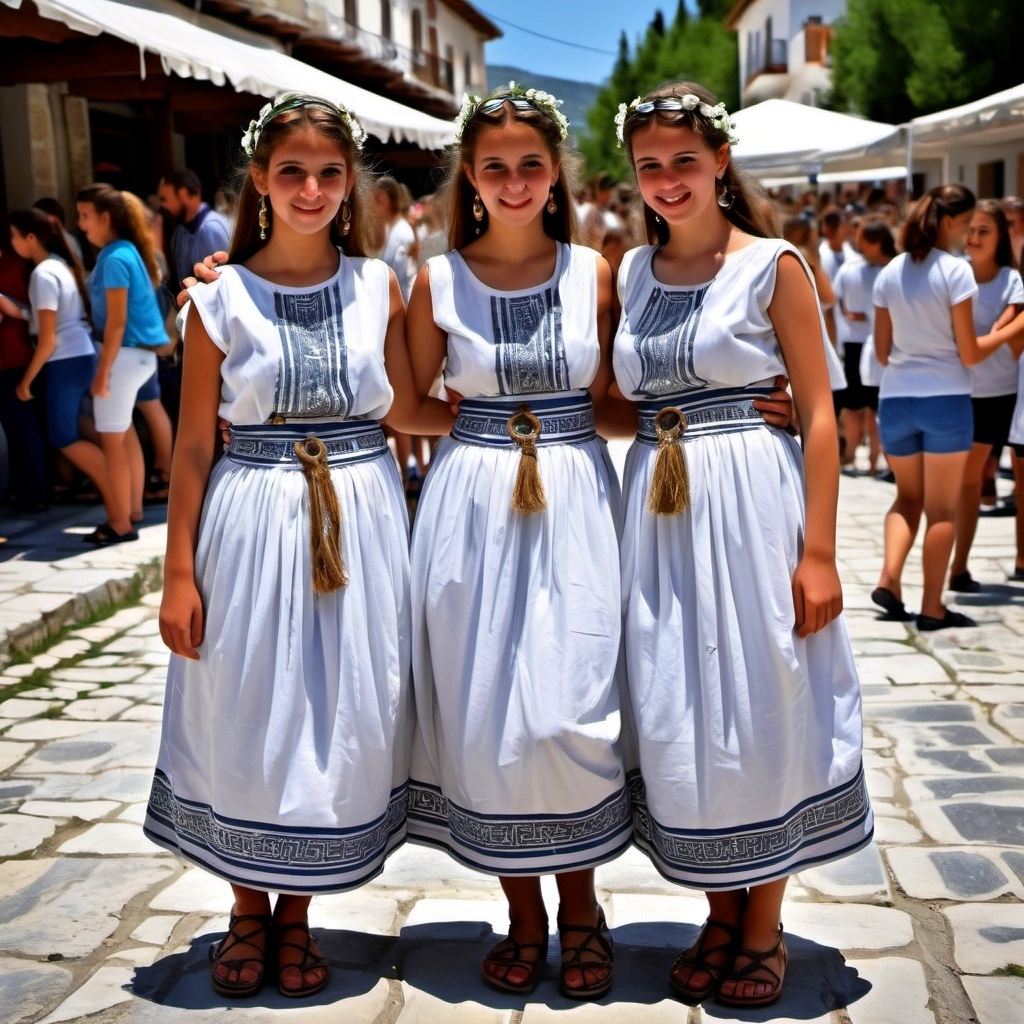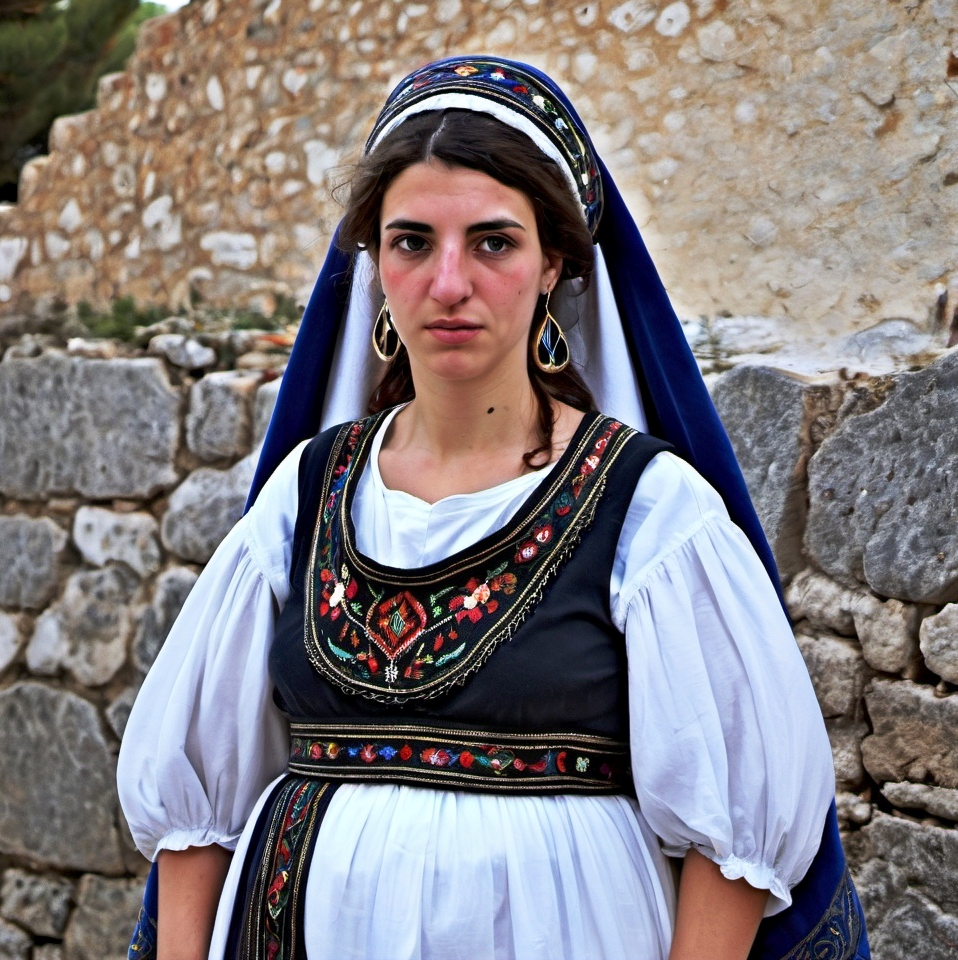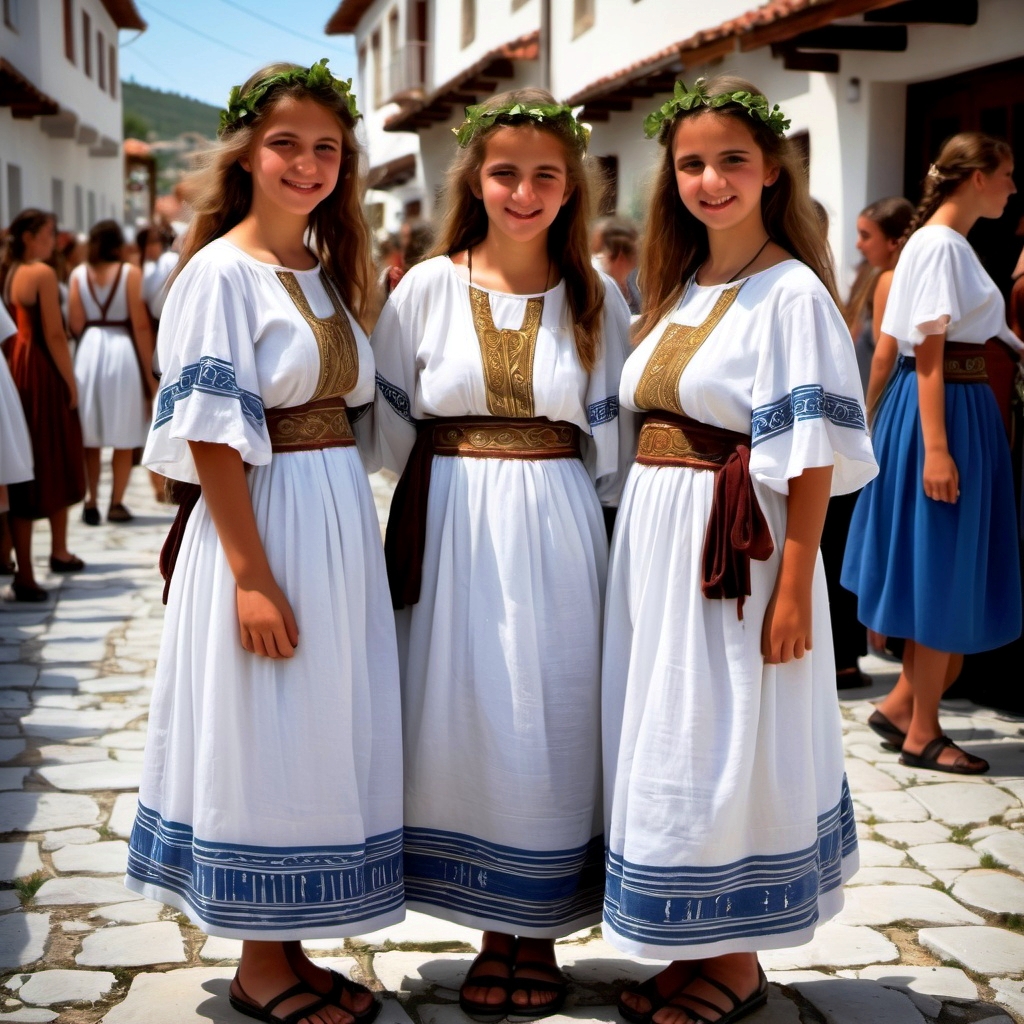
The Karagouna is a traditional folk clothing that is an important component of Greece’s cultural history, notably in Thessaly and sections of Macedonia.
This gorgeous outfit is more than simply a piece of clothing; it represents the women’s history, artistry, and identities.
In this essay, we will look at the history of the Karagouna, the physical skills used to make it, and how it is used symbolically in Greek culture.
The Karagouna: historical background and description
The Karagouna clothing dates back to the 18th and 19th centuries, when Greece saw enormous social and political transformations.
As the country worked to gain independence from Ottoman authority, traditional attire became a sign of national identity and pride.
The Karagouna originated as a unique garment that exemplified Greek women’s perseverance and ingenuity.
The clothing is most closely identified with the rural population of Thessaly, where women played an important role in preserving household economics and cultural traditions.
The Karagouna was worn not just during daily tasks, but also at significant social gatherings including weddings, festivals, and religious rituals. The clothing evolved over time, taking on numerous regional influences but maintaining its essential traits.

The Karagouna is distinguished by its bright colors, detailed designs, and ornate decorations. The outfit usually consists of numerous components:
The Skirt (Fustanella):
The Karagouna’s most distinguishing characteristic is its long, flowing skirt, which is generally constructed of luxurious fabrics like silk or cotton.
The skirt is typically embellished with vibrant embroidery and motifs that reflect the local culture and customs.
The Bodice (Kavadi):
The Karagouna’s bodice is fitting and typically embellished with beautiful stitching. It is intended to highlight the waist and is usually made of contrasting materials to provide a stunning visual impression.
The Apron (Kalamari):
A beautiful apron is worn over the skirt, usually adorned with embroidery or lace. The apron serves both a functional and ornamental purpose, demonstrating the expertise of the lady who created it.
The Headscarf (Kefia):
Women customarily wear a headscarf of various styles and colors. The headscarf is an crucial component of the attire, representing humility and dignity.
Accessories:
The Karagouna is frequently supplemented with jewelry, belts, and colorful pins. These artifacts not only improve the overall look, but also have cultural importance.

Manual Techniques for Creating the Karagouna
The Karagouna is created through a labor-intensive procedure that employs several hand skills passed down through generations.
Each stage in the creation of this traditional clothing demonstrates the expertise and craftsmanship of the ladies who make it.
Fabric Selection
The first step in making a Karagouna is choosing a suitable cloth. Traditionally, ladies would select high-quality textiles like silk, cotton, or wool, which were typically dyed in brilliant colors.
The fabric used is important since it impacts the overall appearance and feel of the garment.
Dyeing Techniques
Historically, natural pigments produced from plants, minerals, and insects were widely employed. Women would gather items from their environment to make dyes, resulting in a diverse range of hues.
The dyeing procedure demands expertise and experience since getting the right hue might be difficult.
Weaving and embroidery
Weaving is a key method used to make Karagouna fabrics. Many women would weave their own textiles on traditional looms, resulting in distinctive patterns and motifs.
Once the cloth is finished, exquisite stitching is applied, frequently with designs inspired by nature, folklore, and local customs.
This needlework is usually done by hand, demonstrating the artisan’s talent and inventiveness.
Sewing and Assembly
After the cloth has been prepared, the various Karagouna components are cut and put together.
This method necessitates accuracy and attention to detail, since each component must fit properly to get the correct shape. Women frequently worked in groups, exchanging skills and tales as they created their garments.
Final Touches
The finishing touches include belts, jewelry, and ornate pins. These components not only add to the beauty of the garment, but also represent the wearer’s particular style.
The finishing process is frequently a communal activity, with family and friends offering ideas and abilities.

Symbolic Use of Karagouna
The Karagouna is more than just a traditional clothing; it has significant symbolic importance in Greek culture.
It depicts the identity, tradition, and perseverance of Greek women. Here are some of the main metaphorical applications of the Karagouna.
Karagouna: Cultural Identity
The Karagouna is a prominent emblem of Greek cultural identity. Wearing this traditional clothing reconnects women with their roots and traditions, allowing them to show their pride in their ancestors.
It is commonly worn at cultural events, festivals, and celebrations to foster a sense of community and belonging.
Karagouna: Rituals and Ceremonies
The Karagouna is widely worn during major life events including weddings, baptisms, and religious rituals.
In these circumstances, the garment represents purity, femininity, and the journey to new stages of life. The brilliant colors and elaborate motifs are said to bring good fortune and benefits to the wearer.
Karagouna: Artistic Expression
The Karagouna serves as a canvas for creative expression, demonstrating the women’s ingenuity and expertise.
The distinctive designs, colors, and stitching express the wearer’s particular personality and artistic vision. This creative part of the clothing allows ladies to express their uniqueness while respecting tradition.
Karagouna: Social Status and Community Bonds
In the past, the quality and complexity of a woman’s Karagouna might indicate her social standing in the community. A well constructed clothing was a source of pride and respect, and it frequently led to social acceptance.
Furthermore, the collaborative aspect of making these costumes develops strong communal relationships among women, who share skills, tales, and experiences.
Karagouna: Resistance and Resilience
Throughout history, the Karagouna has signified both resistance and resilience. During periods of political upheaval and social change, women wore traditional attire to emphasize their identity and cultural heritage.
Wearing the Karagouna became a symbol of protest against tyranny and celebration of strength.

Karagouna Today
In modern Greece, the Karagouna retains cultural significance. While current fashion trends have altered clothing preferences, many women continue to wear the Karagouna on special occasions, festivals, and cultural events.
Despite its traditional significance, Karagouna suffers modern-day issues. The demise of traditional workmanship, urbanization, and shifting fashion preferences all threaten the survival of this classic garment.
However, a variety of groups and projects are striving to solve these issues.
Cultural groups and museums play an important role in raising awareness of traditional attire.
Exhibitions, seminars, and educational initiatives showcase the history and workmanship of the Karagouna, ensuring that future generations understand its importance.
Efforts to maintain ancient crafts and skills have sparked a renewed interest in folk costumes, with artists and designers seeking to keep the Karagouna spirit alive.
The Karagouna costume is more than simply a piece of clothing; it represents the cultural identity of the Thessalian people.
It serves as a symbol of the region’s history, customs, and ideals. The clothing is frequently connected with numerous cultural acts, such as folk dancing, music, and storytelling.
Karagouna: Connection with Folklore and Tradition
The Karagouna is strongly connected to Greek folkloric heritage. Many traditional songs and dances highlight the beauty and grace of ladies who wear the Karagouna.
These cultural gestures help to strengthen communal relationships and pass on stories from one generation to the next.
Traditional music, dance performances, and storytelling are frequently featured at Karagouna festivals and gatherings, creating a lively ambiance that celebrates the past while embracing the present.

Karagouna: Role in Festivals and Celebrations
The Karagouna continues to play an important role in many festivals and celebrations. Events like the “Karagouna Festival” in Karditsa draw people from all across the country and beyond.
During these festivities, ladies assume the Karagouna garb and perform traditional dances to showcase their cultural history.
The costume is also worn for religious events like Easter and Christmas, where it serves as a reminder of the region’s long-standing customs.
The sight of ladies dressed in Karagouna costumes at these festivals inspires feelings of nostalgia and pride among residents, emphasizing the importance of cultural continuity.
Karagouna: Contemporary Relevance
As Greece grapples with the challenges of modernity, the Karagouna remains an important and beloved emblem of cultural identity. In a fast changing world, the preservation of traditional clothes such as the Karagouna provides a means of connecting with the past and maintaining a feeling of identity.
Karagouna:Revival of Traditional Crafts
In recent years, there has been a growing interest in Karagouna’s traditional crafts and artisanal traditions.
Local craftsmen are attempting to resuscitate the processes used to make the garment, ensuring that the skills and expertise are passed down through future generations.
This resurgence not only benefits local economies, but it also inspires pride in cultural heritage.
Karagouna:Education and Awareness
Educational endeavors to raise awareness of traditional clothes and their significance have gained ground in modern Greece.
Schools and cultural groups are introducing Karagouna teachings into their curricula, educating children on the costume’s history, artistry, and cultural significance.
This instructional method instills pride in young people and encourages them to celebrate their cultural heritage.
Karagouna:Global Recognition
The Karagouna has garnered recognition beyond Greece’s borders. Cultural contacts and international festivals have enabled Greek communities overseas to celebrate their history via traditional clothing.
The Karagouna is a significant symbol of Greek identity, allowing diaspora populations to reconnect with their heritage and share their culture with a worldwide audience.


